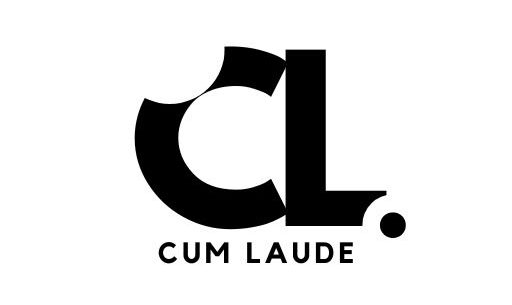What is Bad Debt Expense?
Bad debt expense is an operating cost that represents the amount of accounts receivable that a company anticipates it will be unable to collect from its customers. This expense is typically categorized under selling, general, and administrative costs in the income statement. Since it reduces a company’s net income, accurate calculation and management of bad debt are critical for financial reporting and decision-making.
- Understanding Annual Turnover: A Guide to Investment and Business Metrics
- Understanding Capitalized Interest: How It Impacts Your Business Finances and Asset Value
- Understanding Adjustable-Rate Mortgages (ARMs): Pros, Cons, and How They Work
- Understanding Bank Ratings: A Guide to Financial Stability and Risk Assessment
- Understanding Adverse Selection: How Asymmetric Information Impacts Finance, Insurance, and Investments
Methods for Calculating Bad Debt Expense
Direct Write-Off Method
The direct write-off method involves writing off the receivables account when it becomes clear that a customer invoice will remain unpaid. This method is straightforward but has several limitations. Here’s how it works:
Bạn đang xem: How to Calculate and Manage Bad Debt Expense: A Comprehensive Guide for Businesses
-
When an invoice is determined to be uncollectible, the company debits the bad debt expense account and credits the accounts receivable account.
-
For example, if an invoice of $1,000 is deemed uncollectible, the journal entry would be:
“`
Debit: Bad Debt Expense ($1,000)
Credit: Accounts Receivable ($1,000)
“`
However, this method can lead to misstatement of net income because it does not match the expense with the revenue it was associated with. Additionally, it does not comply with Generally Accepted Accounting Principles (GAAP).
Allowance Method
The allowance method is more aligned with GAAP principles and involves estimating bad debt expenses based on historical averages. Here’s how it works:
-
Calculate the bad debt percentage using the formula: Total Bad Debt / Total Credit Sales.
-
Apply this percentage to current credit sales to determine the bad debt allowance.
-
Use a contra-asset account called Allowance for Doubtful Accounts to record this estimate.
For instance, if a company has a historical bad debt rate of 2% and current credit sales of $100,000, the bad debt allowance would be:
“`
Bad Debt Allowance = 2% * $100,000 = $2,000
“`
The journal entry would involve debiting the bad debt expense account and crediting the allowance for doubtful accounts:
“`
Debit: Bad Debt Expense ($2,000)
Xem thêm : Optimize Your Finances: Ultimate Guide to Business Banking Solutions
Credit: Allowance for Doubtful Accounts ($2,000)
“`
Calculating Bad Debt Expense Using the Allowance Method
Percentage of Bad Debt Formula
To calculate the bad debt percentage, you use the formula:
“`
Bad Debt Percentage = Total Bad Debt / Total Credit Sales
“`
For example, if a company had total bad debts of $10,000 and total credit sales of $500,000 over a period, the bad debt percentage would be:
“`
Bad Debt Percentage = $10,000 / $500,000 = 2%
“`
This percentage can then be applied to current credit sales to estimate the bad debt allowance.
Account Receivable Aging Method
The account receivable aging method involves categorizing invoices by their age (e.g., 0-30 days, 31-60 days) and assigning a bad debt percentage to each category. This method helps in visualizing and managing bad debt more effectively by identifying which invoices are more likely to become uncollectible.
For example:
-
Invoices 0-30 days old might have a 1% bad debt rate.
-
Invoices 31-60 days old might have a 5% bad debt rate.
-
Invoices over 90 days old might have a 20% bad debt rate.
By applying these percentages to the respective categories of accounts receivable, businesses can get a more accurate estimate of potential bad debts.
Recording Bad Debt Expenses in Journal Entries
Direct Write-Off Method Journal Entry
As mentioned earlier, the direct write-off method involves debiting the bad debt expense account and crediting the accounts receivable account when an invoice is deemed uncollectible:
“`
Debit: Bad Debt Expense ($X)
Xem thêm : How Bitcoin is Revolutionizing Finance and Investment: A Comprehensive Guide
Credit: Accounts Receivable ($X)
“`
Allowance Method Journal Entry
For the allowance method, you debit the bad debt expense account and credit the allowance for doubtful accounts:
“`
Debit: Bad Debt Expense ($X)
Credit: Allowance for Doubtful Accounts ($X)
“`
Managing and Preventing Bad Debt
Strategies for Managing Bad Debt
Effective management of bad debt involves several strategies:
-
Sending reminders: Regularly sending reminders to customers can help in collecting payments on time.
-
Offering easier repayment terms: Providing flexible payment plans can encourage customers to pay their dues.
-
Using aging reports: Monitoring accounts receivable through aging reports helps in identifying potential bad debts early.
By implementing these strategies, businesses can reduce the likelihood of accounts becoming uncollectible.
Preventive Measures
Preventing bad debt is often more cost-effective than managing it after it occurs. Here are some preventive measures:
-
Setting thresholds: Establishing clear thresholds for current and potential bad debt helps in early identification.
-
Monitoring accounts receivable: Regularly reviewing accounts receivable ensures that any issues are addressed promptly.
-
Adjusting credit policies: Tightening credit policies or conducting thorough credit checks on new customers can minimize the risk of bad debt.
Additional Resources
For further guidance on managing bad debt expenses, you may refer to resources such as:
-
The Financial Accounting Standards Board (FASB) guidelines on accounting for bad debts.
-
Industry-specific best practices for credit management.
-
Financial software tools designed to help track and manage accounts receivable.
These resources can provide additional insights and tools to help businesses manage their bad debt expenses more effectively.
Nguồn: https://cumlaude.fun
Danh mục: Blog






